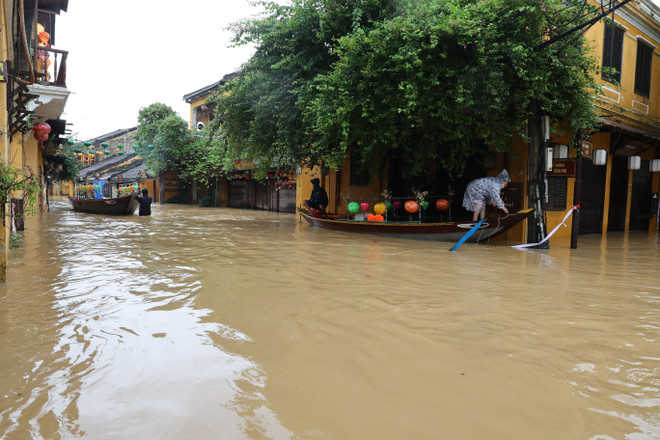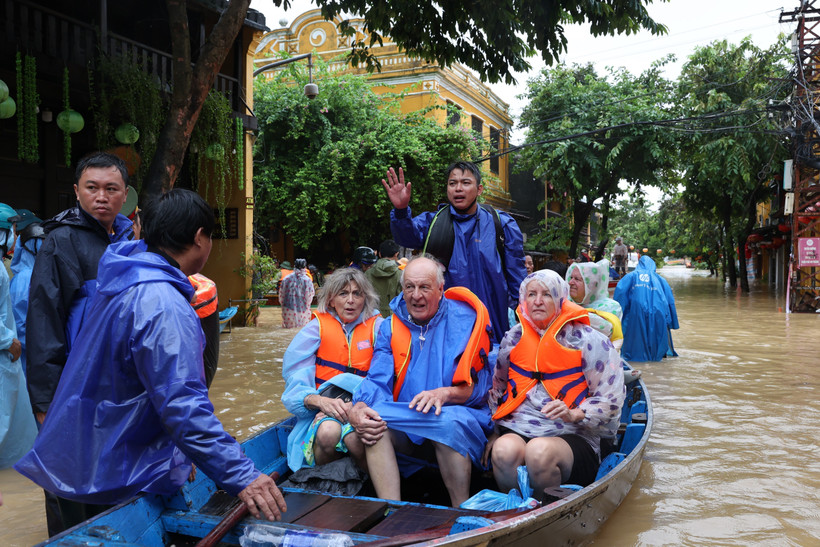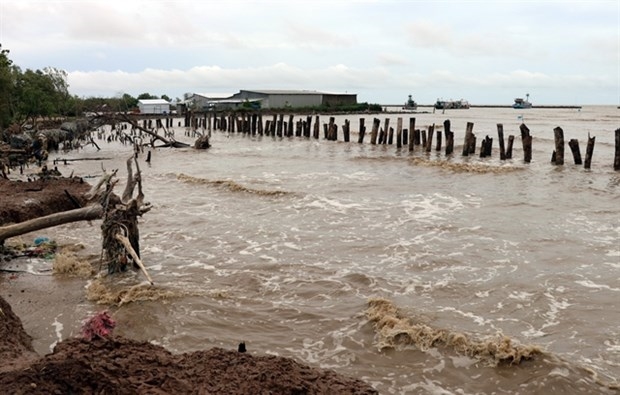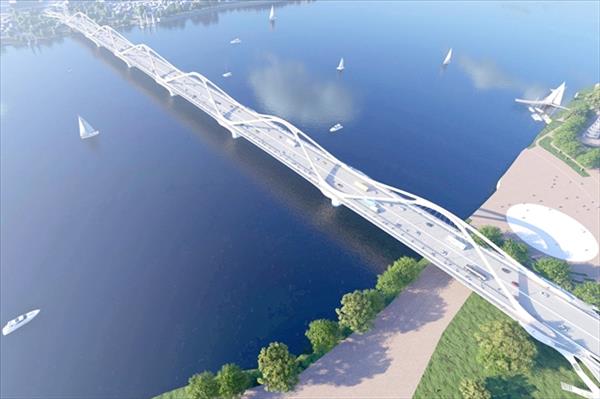The Da Nang administration on October 28 declared a state of emergency for transport infrastructure after days of heavy rain caused severe flooding and landslides across the central city.
At an emergency meeting on disaster response the same day, Chairman of the municipal People’s Committee Pham Duc An ordered relevant departments to immediately allocate 10 billion VND (around 380,000 USD) to the city’s Construction Department and local communes to begin clearing debris and reopening key transport routes badly damaged by floods and landslides, particularly arterial roads.
The official warned that many hillsides are waterlogged and at risk of further collapse, urging rescue and repair teams to proceed with caution to avoid accidents during clearance operations. He directed local authorities to prepare contingency plans for worsening weather and ensure prompt responses if rainfall intensifies.
He also called for a review of afforestation and land management practices, noting that areas planted with acacia trees have suffered heavy erosion. He requested the Agriculture and Environment Department to propose more resilient crops such as medicinal plants and large timber trees, and to support affected forest growers.
An further instructed relevant departments to develop resettlement plans for residents in landslide-vulnerable zones and to expedite relocation to safer areas. He praised local officials for their proactive response, particularly efforts to evacuate residents from danger zones and ensure sufficient food, shelter, and supplies for affected families, in line with Vietnam’s “four-on-the-spot” principle — local leadership, manpower, logistics, and resources.

According to the Da Nang Civil Defence Steering Committee, as of the afternoon of October 28, several communes and wards were submerged after consecutive days of heavy rain, with more than 65,000 households affected. Over 1,400 households with 5,600 residents have been evacuated.
Infrastructure damage has been extensive, with nearly 1,900 metres of roads destroyed. Arteries including the Ho Chi Minh Road and National Highways 40B, 14E, 14H, 24C, and 1A have suffered multiple landslide and flooding points, cutting off traffic and isolating several residential areas.
Also on October 28, a delegation from the Military Region 5 Command, led by Colonel Phan Dai Nghia, Deputy Commander and Chief of the Staff, inspected flood response efforts in Da Nang.
During field visits to Ngu Hanh Son and Dien Ban wards, Nghia ordered all military units stationed in the region to remain on full alert and stay ready around the clock for rescue operations.
He also instructed units to assist residents in moving valuable belongings and evacuating from areas at risk of deep flooding or landslides, and to coordinate closely with local governments to provide essentials, ensuring that no residents are left hungry or cold, especially in isolated areas.
Military Region 5 will continue working closely with the Ministry of National Defence, the Ministry of Public Security, and local authorities to intensify flood response operations, prioritising the evacuation of residents in Da Nang and neighbouring Quang Ngai province. It has also prepared logistics, food supplies, and manpower to support post-flood recovery, with the goal of minimising loss of life and property, Nghia said./.



















